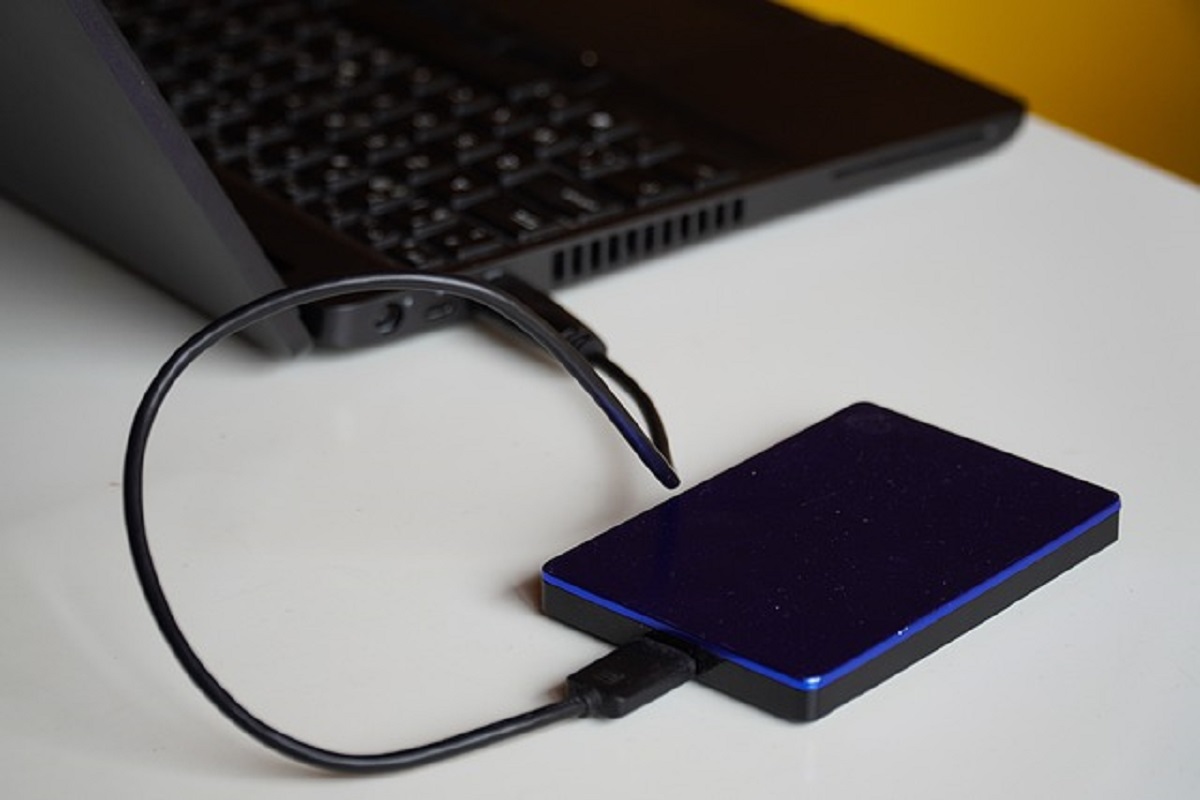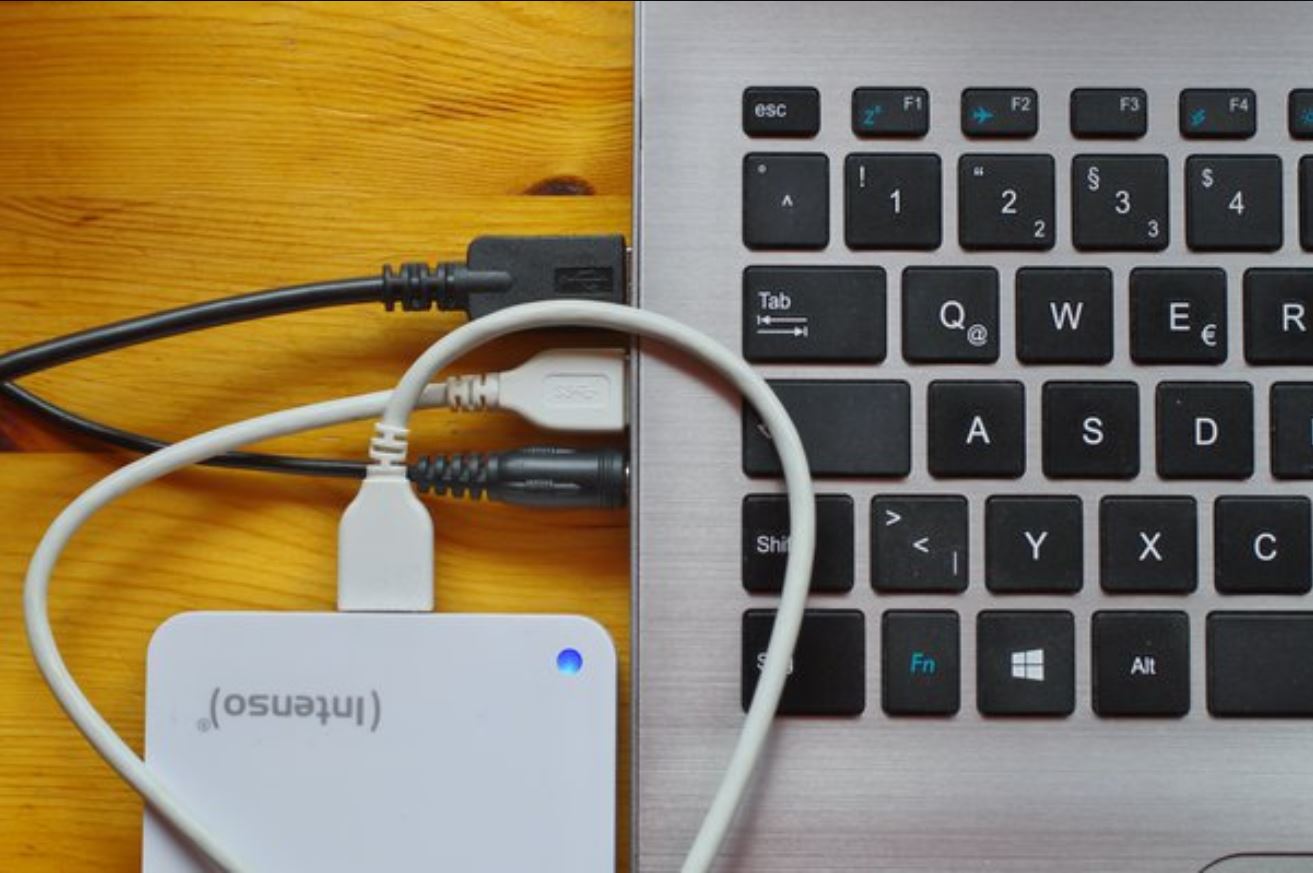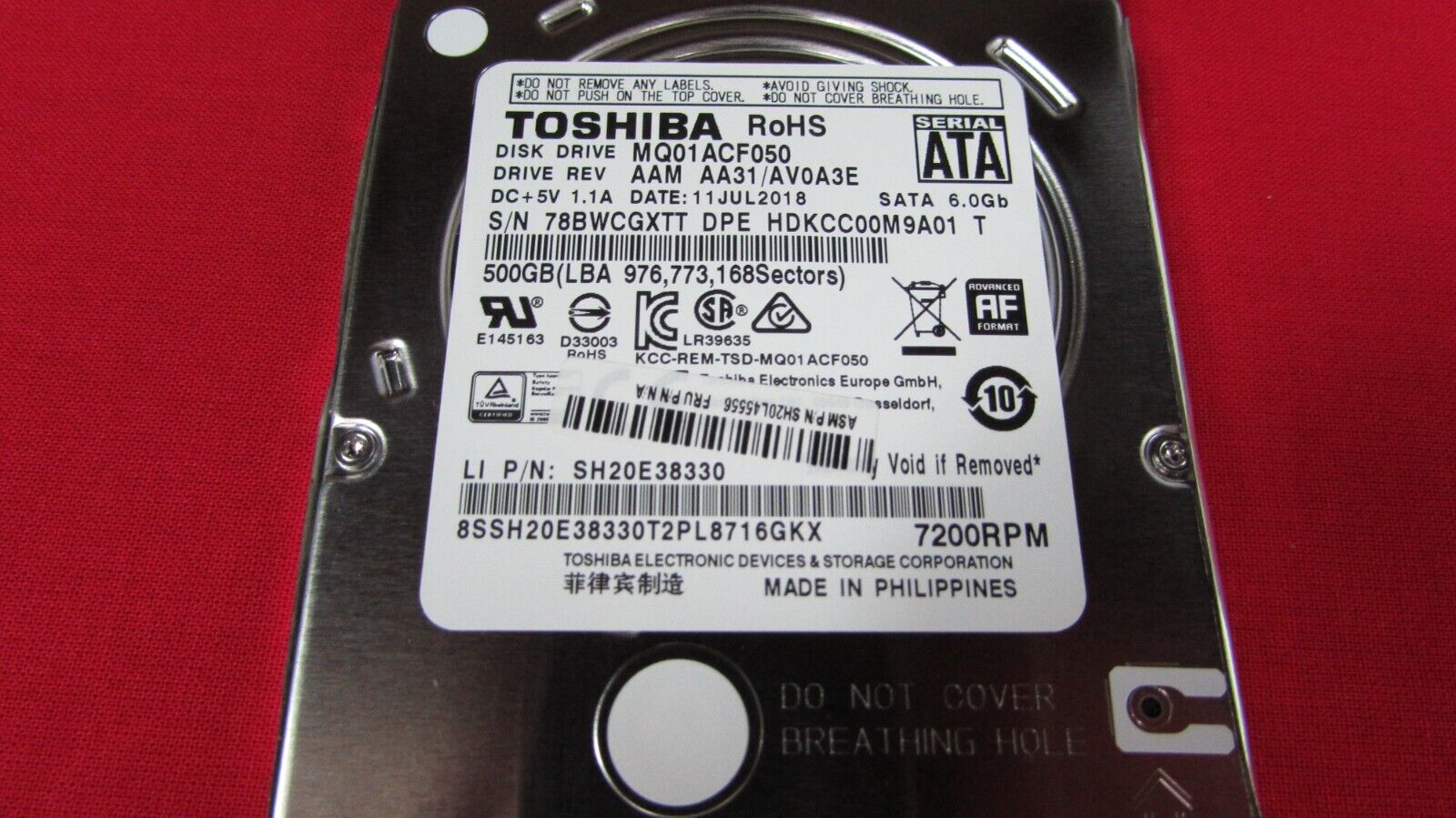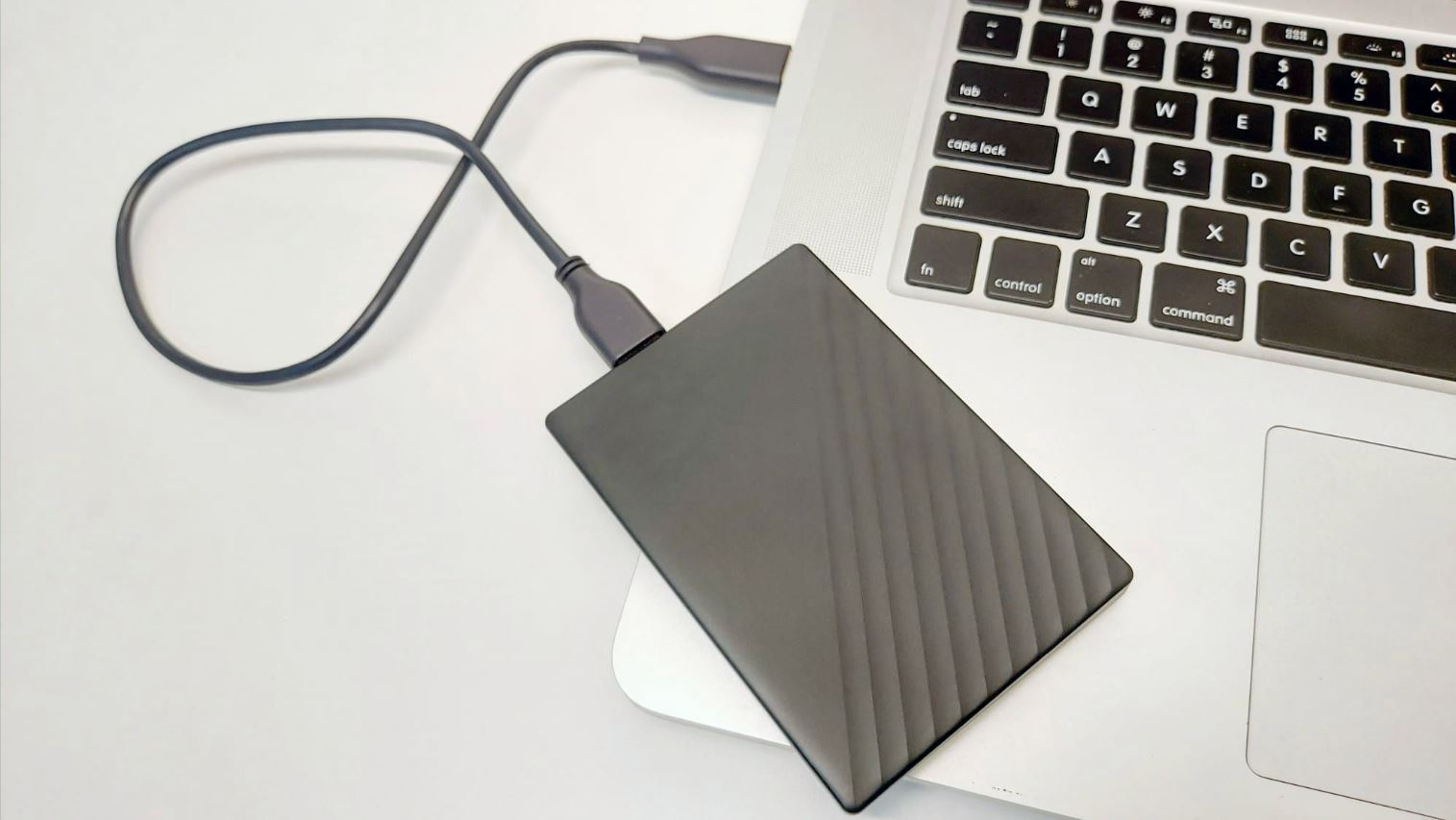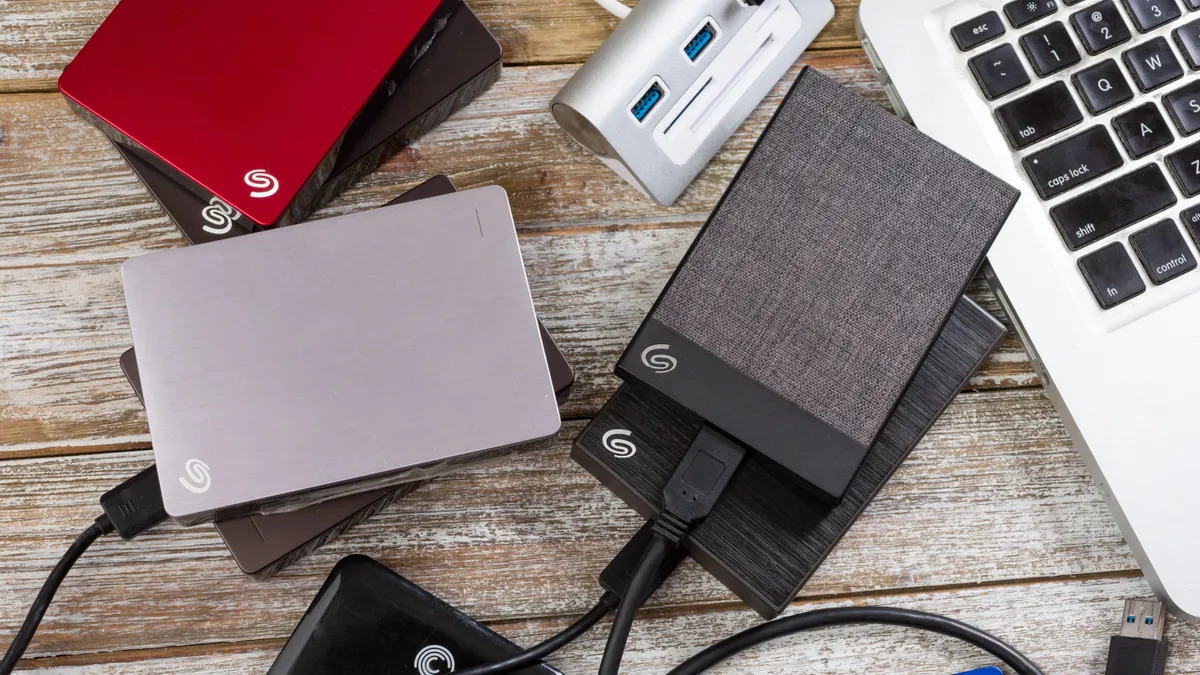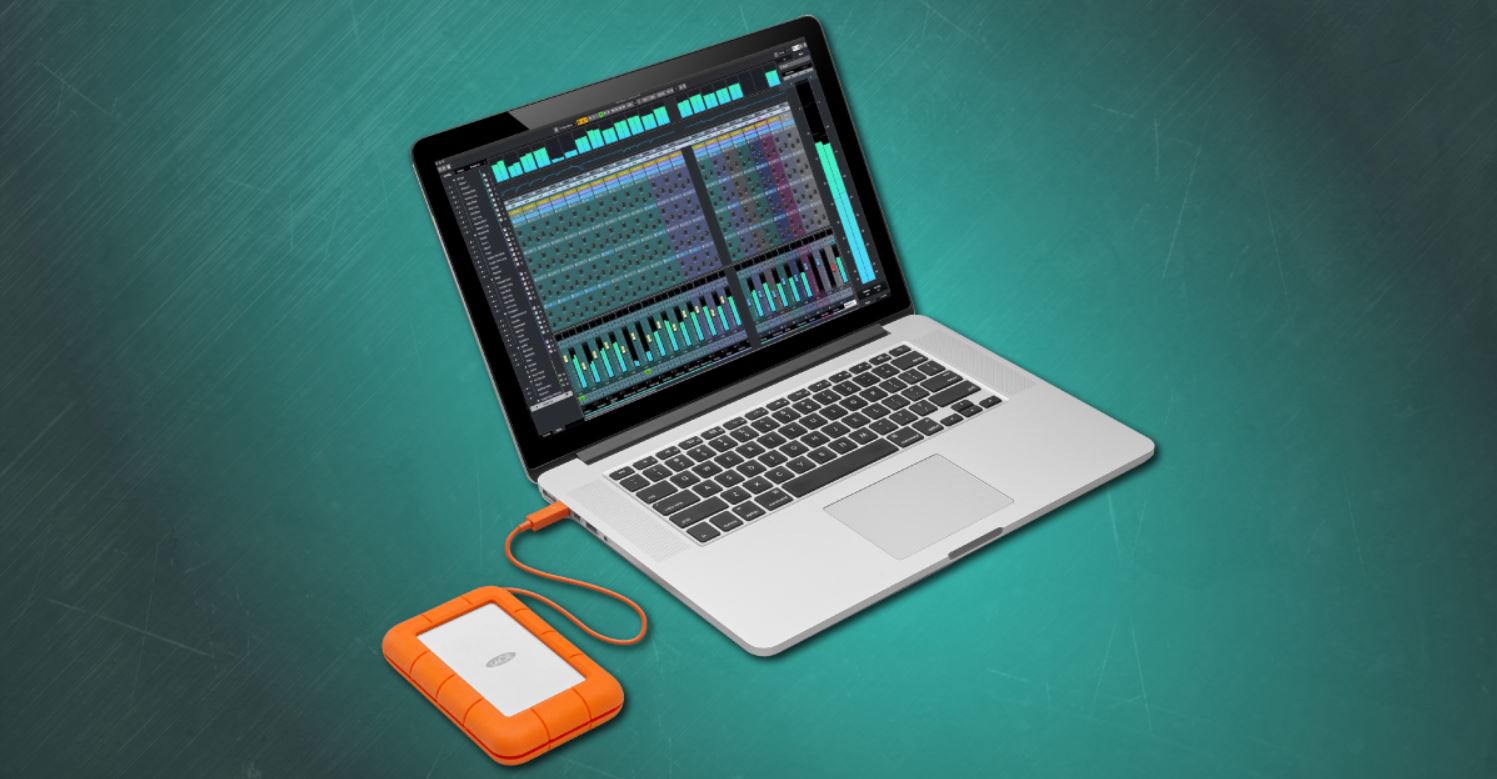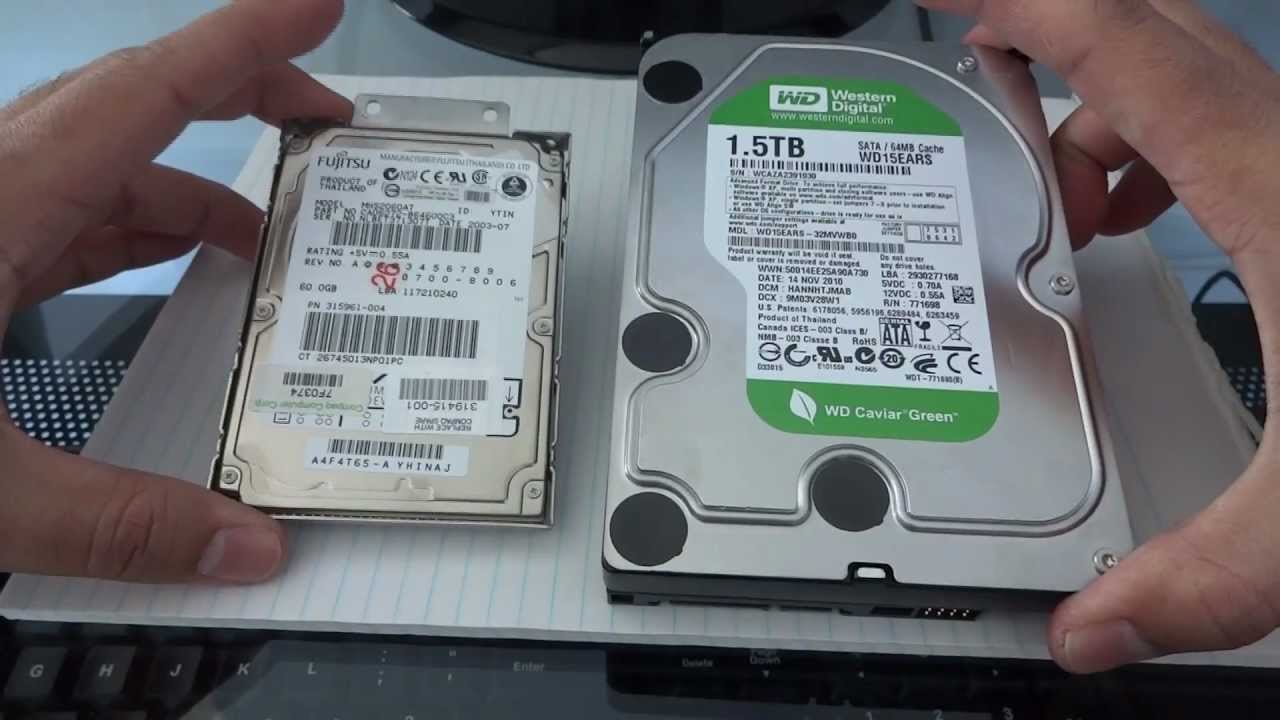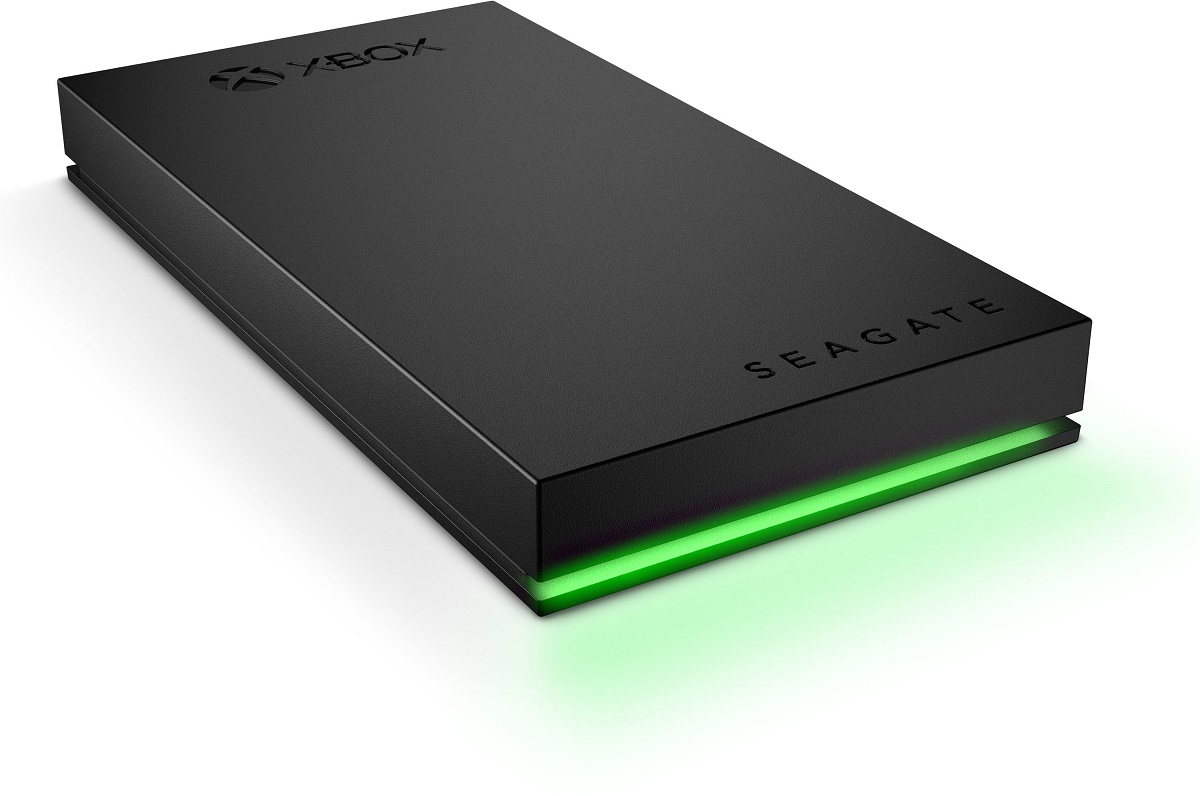Introduction
When it comes to external hard drives, one question that often arises is whether it’s necessary to unplug them when not in use. With advancements in technology and power-saving features, it’s easy to assume that leaving your external hard drive plugged in all the time won’t have any negative effects. However, there are still valid reasons to consider unplugging your external hard drive when it’s not actively being used.
External hard drives are a convenient way to store and access large amounts of data. Whether you use it for backup purposes, storing important files, or carrying a portable library of media, it’s essential to understand how best to take care of your device. In this article, we will explore the benefits and downsides of unplugging your external hard drive when it’s not in use. By understanding these factors, you can make an informed decision that suits your specific needs and preferences.
Before delving into the pros and cons, it’s worth noting that the decision to unplug your external hard drive ultimately depends on your usage patterns, priorities, and the specific circumstances in which you use your device. By considering the following factors, you can determine whether it’s advisable to unplug your external hard drive when it’s not actively being used.
Benefits of Unplugging External Hard Drive
There are several advantages to unplugging your external hard drive when it’s not in use. Let’s explore some of the key benefits:
- Reduction in Energy Consumption: By disconnecting your external hard drive from the power source, you can save electricity and reduce your energy consumption. This is particularly beneficial for individuals who are conscious about energy efficiency and want to minimize their environmental impact.
- Protection from Power Surges: Unplugging your external hard drive safeguards it from unexpected power surges. Power surges, which can result from lightning storms or electrical issues, can cause irreparable damage to electronic devices. By disconnecting your external hard drive, you can minimize the risk of data loss and hardware damage caused by power surges.
- Prevention of Data Loss: External hard drives can be susceptible to data loss due to various factors, such as hardware failures or accidental deletion. By disconnecting your external hard drive when not in use, you reduce the likelihood of data loss caused by human error or system mishaps.
- Protection from Physical Damage: Leaving your external hard drive plugged in increases the risk of accidental physical damage. It may be knocked over, dropped, or exposed to liquids, potentially causing irreversible harm to the device and the data it contains. Unplugging your external hard drive and keeping it stored in a safe place when not in use can help protect it from such accidents.
- Enhanced Security: Disconnecting your external hard drive mitigates the risk of unauthorized access to your data. If your computer is compromised by malware or if someone gains physical access to your computer, an unplugged external hard drive ensures an additional layer of security, as they won’t be able to access the data stored on the device.
By considering these benefits, you can make an informed decision about whether unplugging your external hard drive aligns with your specific needs and priorities. However, it’s essential to acknowledge that there are also downsides to consider, which we will explore in the next section.
Benefits of Unplugging External Hard Drive
There are several advantages to unplugging your external hard drive when it’s not in use. Let’s explore some of the key benefits:
-
Reduction in Energy Consumption
By disconnecting your external hard drive from the power source, you can save electricity and reduce your energy consumption. While external hard drives typically consume minimal power compared to other devices, such as gaming consoles or desktop computers, every little bit counts.
Leaving your external hard drive constantly plugged in means that it draws power even when not in use. Over time, this continuous power consumption can add up and contribute to unnecessary energy waste. By unplugging the device, you can make a small but significant contribution to energy conservation.
Moreover, reducing energy consumption is not only beneficial for the environment but also for your utility bills. By unplugging your external hard drive when it’s not actively being used, you can potentially save a few dollars on your monthly electricity bill.
Another aspect to consider is the impact of standby power consumption, commonly known as “vampire power.” Even when devices are in standby mode, they continue to draw power to maintain certain functions or be ready for instant use. Unplugging your external hard drive eliminates standby power consumption, further reducing the amount of energy wasted.
In addition, if you use multiple external hard drives or have a setup with additional peripherals, unplugging them when not in use can result in even more significant energy savings. This can have a positive long-term impact on both the environment and your wallet.
By understanding the reduction in energy consumption as one of the benefits of unplugging your external hard drive, you can make a conscious decision that aligns with your energy-saving goals while maintaining the convenience and accessibility of your device.
Benefits of Unplugging External Hard Drive
There are several advantages to unplugging your external hard drive when it’s not in use. Let’s explore some of the key benefits:
-
Reduction in Energy Consumption
-
Protection from Power Surges
By disconnecting your external hard drive from the power source, you can save electricity and reduce your energy consumption. While external hard drives typically consume minimal power compared to other devices, such as gaming consoles or desktop computers, every little bit counts.
Leaving your external hard drive constantly plugged in means that it draws power even when not in use. Over time, this continuous power consumption can add up and contribute to unnecessary energy waste. By unplugging the device, you can make a small but significant contribution to energy conservation.
Moreover, reducing energy consumption is not only beneficial for the environment but also for your utility bills. By unplugging your external hard drive when it’s not actively being used, you can potentially save a few dollars on your monthly electricity bill.
Another aspect to consider is the impact of standby power consumption, commonly known as “vampire power.” Even when devices are in standby mode, they continue to draw power to maintain certain functions or be ready for instant use. Unplugging your external hard drive eliminates standby power consumption, further reducing the amount of energy wasted.
In addition, if you use multiple external hard drives or have a setup with additional peripherals, unplugging them when not in use can result in even more significant energy savings. This can have a positive long-term impact on both the environment and your wallet.
Unplugging your external hard drive provides an added layer of protection against power surges. Power surges can occur when there is a rapid increase in electrical voltage, often caused by lightning strikes or issues with the electrical grid.
When a power surge happens, it can send an excessive amount of electrical current through connected devices, potentially damaging their internal components. External hard drives, like any other electronic device, are susceptible to such damage if they’re left plugged in during a power surge.
By disconnecting your external hard drive from the power source during periods of potential electrical instability, you can safeguard it from the harmful effects of power surges. This precautionary measure can help prevent data loss, hardware malfunctions, and the need for costly repairs or replacements.
It’s important to note that power surges may not be a frequent occurrence in certain areas. However, if you live in an area prone to lightning storms or have experienced power surges in the past, it’s wise to consider unplugging your external hard drive as an extra precautionary measure.
By understanding the benefits of protection from power surges when unplugging your external hard drive, you can ensure the safety and longevity of your device while minimizing the risk of data loss or hardware damage.
Benefits of Unplugging External Hard Drive
There are several advantages to unplugging your external hard drive when it’s not in use. Let’s explore some of the key benefits:
-
Reduction in Energy Consumption
-
Protection from Power Surges
-
Prevention of Data Loss
By disconnecting your external hard drive from the power source, you can save electricity and reduce your energy consumption. While external hard drives typically consume minimal power compared to other devices, such as gaming consoles or desktop computers, every little bit counts.
Leaving your external hard drive constantly plugged in means that it draws power even when not in use. Over time, this continuous power consumption can add up and contribute to unnecessary energy waste. By unplugging the device, you can make a small but significant contribution to energy conservation.
Moreover, reducing energy consumption is not only beneficial for the environment but also for your utility bills. By unplugging your external hard drive when it’s not actively being used, you can potentially save a few dollars on your monthly electricity bill.
Another aspect to consider is the impact of standby power consumption, commonly known as “vampire power.” Even when devices are in standby mode, they continue to draw power to maintain certain functions or be ready for instant use. Unplugging your external hard drive eliminates standby power consumption, further reducing the amount of energy wasted.
In addition, if you use multiple external hard drives or have a setup with additional peripherals, unplugging them when not in use can result in even more significant energy savings. This can have a positive long-term impact on both the environment and your wallet.
Unplugging your external hard drive provides an added layer of protection against power surges. Power surges can occur when there is a rapid increase in electrical voltage, often caused by lightning strikes or issues with the electrical grid.
When a power surge happens, it can send an excessive amount of electrical current through connected devices, potentially damaging their internal components. External hard drives, like any other electronic device, are susceptible to such damage if they’re left plugged in during a power surge.
By disconnecting your external hard drive from the power source during periods of potential electrical instability, you can safeguard it from the harmful effects of power surges. This precautionary measure can help prevent data loss, hardware malfunctions, and the need for costly repairs or replacements.
External hard drives are relied upon for storing important files, documents, photos, and videos. It’s crucial to protect the data stored on these devices and minimize the risk of data loss.
Leaving your external hard drive constantly connected to your computer means it is susceptible to accidental data loss. For example, if you accidentally delete files or if your computer experiences a software malfunction, there is a chance that the data on your external hard drive may be affected as well.
By unplugging your external hard drive when it’s not in use, you can minimize the risk of such data loss. Even if there is an accidental deletion or system error, your external hard drive won’t be affected if it is safely unplugged and stored separately.
Additionally, unplugging your external hard drive reduces the exposure to potential malware or viruses. If your computer gets infected with malicious software, there is a possibility that it can spread to your external hard drive if it remains connected. By disconnecting the device, you limit the chance of malware infecting your external hard drive and compromising your valuable data.
By considering the prevention of data loss as a benefit of unplugging your external hard drive, you prioritize the security and integrity of your important files, ensuring their availability when you need them the most.
Benefits of Unplugging External Hard Drive
There are several advantages to unplugging your external hard drive when it’s not in use. Let’s explore some of the key benefits:
-
Reduction in Energy Consumption
-
Protection from Power Surges
-
Prevention of Data Loss
-
Protection from Physical Damage
By disconnecting your external hard drive from the power source, you can save electricity and reduce your energy consumption. While external hard drives typically consume minimal power compared to other devices, such as gaming consoles or desktop computers, every little bit counts.
Leaving your external hard drive constantly plugged in means that it draws power even when not in use. Over time, this continuous power consumption can add up and contribute to unnecessary energy waste. By unplugging the device, you can make a small but significant contribution to energy conservation.
Moreover, reducing energy consumption is not only beneficial for the environment but also for your utility bills. By unplugging your external hard drive when it’s not actively being used, you can potentially save a few dollars on your monthly electricity bill.
Another aspect to consider is the impact of standby power consumption, commonly known as “vampire power.” Even when devices are in standby mode, they continue to draw power to maintain certain functions or be ready for instant use. Unplugging your external hard drive eliminates standby power consumption, further reducing the amount of energy wasted.
In addition, if you use multiple external hard drives or have a setup with additional peripherals, unplugging them when not in use can result in even more significant energy savings. This can have a positive long-term impact on both the environment and your wallet.
Unplugging your external hard drive provides an added layer of protection against power surges. Power surges can occur when there is a rapid increase in electrical voltage, often caused by lightning strikes or issues with the electrical grid.
When a power surge happens, it can send an excessive amount of electrical current through connected devices, potentially damaging their internal components. External hard drives, like any other electronic device, are susceptible to such damage if they’re left plugged in during a power surge.
By disconnecting your external hard drive from the power source during periods of potential electrical instability, you can safeguard it from the harmful effects of power surges. This precautionary measure can help prevent data loss, hardware malfunctions, and the need for costly repairs or replacements.
External hard drives are relied upon for storing important files, documents, photos, and videos. It’s crucial to protect the data stored on these devices and minimize the risk of data loss.
Leaving your external hard drive constantly connected to your computer means it is susceptible to accidental data loss. For example, if you accidentally delete files or if your computer experiences a software malfunction, there is a chance that the data on your external hard drive may be affected as well.
By unplugging your external hard drive when it’s not in use, you can minimize the risk of such data loss. Even if there is an accidental deletion or system error, your external hard drive won’t be affected if it is safely unplugged and stored separately.
Additionally, unplugging your external hard drive reduces the exposure to potential malware or viruses. If your computer gets infected with malicious software, there is a possibility that it can spread to your external hard drive if it remains connected. By disconnecting the device, you limit the chance of malware infecting your external hard drive and compromising your valuable data.
Leaving your external hard drive plugged in increases the risk of accidental physical damage. It may be knocked over, dropped, or exposed to liquids, potentially causing irreversible harm to the device and the data it contains.
By disconnecting your external hard drive when it’s not in use and keeping it stored in a safe place, you minimize the chances of physical damage. It eliminates the possibility of tripping over cables or inadvertently damaging the device while it’s plugged in.
Moreover, by safely storing your external hard drive when it’s not being used, you protect it from potential accidents and mishaps that can occur in your workspace. This includes spills, bumping into the device, or even theft.
Unplugging your external hard drive and taking the necessary precautions to protect it physically ensures that your valuable data remains safe and secure.
Benefits of Unplugging External Hard Drive
There are several advantages to unplugging your external hard drive when it’s not in use. Let’s explore some of the key benefits:
-
Reduction in Energy Consumption
-
Protection from Power Surges
-
Prevention of Data Loss
-
Protection from Physical Damage
-
Enhanced Security
By disconnecting your external hard drive from the power source, you can save electricity and reduce your energy consumption. While external hard drives typically consume minimal power compared to other devices, such as gaming consoles or desktop computers, every little bit counts.
Leaving your external hard drive constantly plugged in means that it draws power even when not in use. Over time, this continuous power consumption can add up and contribute to unnecessary energy waste. By unplugging the device, you can make a small but significant contribution to energy conservation.
Moreover, reducing energy consumption is not only beneficial for the environment but also for your utility bills. By unplugging your external hard drive when it’s not actively being used, you can potentially save a few dollars on your monthly electricity bill.
Another aspect to consider is the impact of standby power consumption, commonly known as “vampire power.” Even when devices are in standby mode, they continue to draw power to maintain certain functions or be ready for instant use. Unplugging your external hard drive eliminates standby power consumption, further reducing the amount of energy wasted.
In addition, if you use multiple external hard drives or have a setup with additional peripherals, unplugging them when not in use can result in even more significant energy savings. This can have a positive long-term impact on both the environment and your wallet.
Unplugging your external hard drive provides an added layer of protection against power surges. Power surges can occur when there is a rapid increase in electrical voltage, often caused by lightning strikes or issues with the electrical grid.
When a power surge happens, it can send an excessive amount of electrical current through connected devices, potentially damaging their internal components. External hard drives, like any other electronic device, are susceptible to such damage if they’re left plugged in during a power surge.
By disconnecting your external hard drive from the power source during periods of potential electrical instability, you can safeguard it from the harmful effects of power surges. This precautionary measure can help prevent data loss, hardware malfunctions, and the need for costly repairs or replacements.
External hard drives are relied upon for storing important files, documents, photos, and videos. It’s crucial to protect the data stored on these devices and minimize the risk of data loss.
Leaving your external hard drive constantly connected to your computer means it is susceptible to accidental data loss. For example, if you accidentally delete files or if your computer experiences a software malfunction, there is a chance that the data on your external hard drive may be affected as well.
By unplugging your external hard drive when it’s not in use, you can minimize the risk of such data loss. Even if there is an accidental deletion or system error, your external hard drive won’t be affected if it is safely unplugged and stored separately.
Additionally, unplugging your external hard drive reduces the exposure to potential malware or viruses. If your computer gets infected with malicious software, there is a possibility that it can spread to your external hard drive if it remains connected. By disconnecting the device, you limit the chance of malware infecting your external hard drive and compromising your valuable data.
Leaving your external hard drive plugged in increases the risk of accidental physical damage. It may be knocked over, dropped, or exposed to liquids, potentially causing irreversible harm to the device and the data it contains.
By disconnecting your external hard drive when it’s not in use and keeping it stored in a safe place, you minimize the chances of physical damage. It eliminates the possibility of tripping over cables or inadvertently damaging the device while it’s plugged in.
Moreover, by safely storing your external hard drive when it’s not being used, you protect it from potential accidents and mishaps that can occur in your workspace. This includes spills, bumping into the device, or even theft.
Unplugging your external hard drive contributes to enhanced security for your data. By disconnecting the device, you ensure that no unauthorized access can occur while it’s not in use.
In today’s world, cybersecurity threats are prevalent, and it’s essential to take proactive measures to protect your valuable data. When your external hard drive is constantly connected to your computer, there is a possibility that it can be targeted by hackers or malware seeking to gain access to your files.
By disconnecting the external hard drive and physically separating it from your computer, you significantly reduce the risk of unauthorized access. This ensures that your sensitive data remains secure and inaccessible to anyone who may gain access to your computer system.
Additionally, by disconnecting your external hard drive, you minimize the chances of accidental data breaches. If you lend your computer to someone or if it gets stolen, the external hard drive won’t be accessible if it’s not connected to the device.
Downsides of Unplugging External Hard Drive
While there are several benefits to unplugging your external hard drive when it’s not in use, it’s important to consider the downsides as well. Let’s explore some of the potential drawbacks:
-
Inconvenience
-
Wear and Tear
-
Risk of Misplacement
-
Reduced Accessibility
-
Potential Data Corruption
Unplugging and plugging in your external hard drive every time you want to use it can be inconvenient, especially if you require frequent access to your files. It adds an extra step to the process and may disrupt your workflow.
Additionally, if you frequently connect and disconnect your external hard drive, there is a chance of wear and tear on the USB or power connectors. Over time, this can result in loose connections or damaged ports, affecting the overall functionality of the device.
Constantly plugging and unplugging your external hard drive can contribute to wear and tear on the device and its components. The USB or power connectors may become worn out, which can lead to connection issues or even render the device unusable.
Moreover, the process of disconnecting and reconnecting the external hard drive exposes it to potential physical damage. Accidental drops or mishandling during the process can cause internal damage, affecting the device’s performance and longevity.
When you unplug your external hard drive and store it separately, there is a risk of misplacing or losing the device. This can be particularly problematic if you rely on the external hard drive for important files or if it contains sensitive data.
Remembering where you stored the external hard drive and ensuring its safekeeping can add an extra level of responsibility and potential stress. If the device is misplaced or lost, it can result in a significant loss of data that may be challenging or impossible to recover.
If you unplug your external hard drive when not in use, it means that you won’t have immediate access to your files. Whenever you need to access or transfer data, you will have to plug in the device, wait for it to be recognized, and then access the files.
This can be inconvenient if you frequently need to access data quickly or if you need to work with large files that require high-speed transfer rates. It can disrupt your workflow and slow down your productivity.
There is a slight risk of data corruption when constantly disconnecting and reconnecting your external hard drive. While modern operating systems are designed to handle safe device removal, there is still a small possibility of data corruption if the process is not performed correctly.
To minimize this risk, it’s important to follow proper device removal procedures, such as safely ejecting the external hard drive from your operating system before unplugging it. This ensures that any pending write operations are completed, reducing the chances of data corruption.
By considering these downsides, you can make an informed decision about whether unplugging your external hard drive aligns with your specific needs and priorities. It’s essential to weigh the potential drawbacks against the benefits and determine the best approach for your personal usage patterns and concerns.
Downsides of Unplugging External Hard Drive
-
Inconvenience
One notable downside of unplugging your external hard drive when it’s not in use is the inconvenience it can bring to your workflow. Having to disconnect and reconnect the device every time you want to access your files can be time-consuming and disrupt your productivity.
When your external hard drive is constantly plugged in, it’s readily available for immediate use, allowing you to access your files seamlessly. However, by unplugging it, you add an extra step to the process, requiring you to locate the device, connect it to your computer, and wait for it to be recognized.
This inconvenience is particularly felt if you frequently use your external hard drive or rely on it for ongoing projects. It can disrupt your workflow, especially when you need to quickly access and transfer files. Additionally, if you frequently connect and disconnect your external hard drive, there is the potential for wear and tear on the USB or power connectors, which may lead to connection issues over time.
However, it’s worth noting that advancements in technology, such as USB-C connectors and fast data transfer speeds, have made the process of connecting and reconnecting external hard drives more seamless and efficient. Additionally, some devices come with features like auto-backup or automatic syncing, which can mitigate the inconvenience by automatically backing up your data without the need for manual intervention.
To minimize the inconvenience, you may consider using cloud storage services or network-attached storage (NAS) solutions as an alternative solution, providing easy access to your files without the need for physical connection or disconnection.
Ultimately, the inconvenience of unplugging your external hard drive must be weighed against the other benefits and considerations, such as energy consumption, data security, and physical protection. It’s important to assess your specific usage patterns and priorities to determine the best approach for managing your external hard drive.
Downsides of Unplugging External Hard Drive
-
Inconvenience
-
Wear and Tear
One notable downside of unplugging your external hard drive when it’s not in use is the inconvenience it can bring to your workflow. Having to disconnect and reconnect the device every time you want to access your files can be time-consuming and disrupt your productivity.
When your external hard drive is constantly plugged in, it’s readily available for immediate use, allowing you to access your files seamlessly. However, by unplugging it, you add an extra step to the process, requiring you to locate the device, connect it to your computer, and wait for it to be recognized.
This inconvenience is particularly felt if you frequently use your external hard drive or rely on it for ongoing projects. It can disrupt your workflow, especially when you need to quickly access and transfer files. Additionally, if you frequently connect and disconnect your external hard drive, there is the potential for wear and tear on the USB or power connectors, which may lead to connection issues over time.
However, it’s worth noting that advancements in technology, such as USB-C connectors and fast data transfer speeds, have made the process of connecting and reconnecting external hard drives more seamless and efficient. Additionally, some devices come with features like auto-backup or automatic syncing, which can mitigate the inconvenience by automatically backing up your data without the need for manual intervention.
To minimize the inconvenience, you may consider using cloud storage services or network-attached storage (NAS) solutions as an alternative solution, providing easy access to your files without the need for physical connection or disconnection.
Ultimately, the inconvenience of unplugging your external hard drive must be weighed against the other benefits and considerations, such as energy consumption, data security, and physical protection. It’s important to assess your specific usage patterns and priorities to determine the best approach for managing your external hard drive.
Constantly plugging and unplugging your external hard drive can contribute to wear and tear on the device and its connectors. The USB or power connectors that facilitate the connection between your external hard drive and your computer can become loose or damaged over time.
When the connectors are repeatedly inserted and removed, they may experience mechanical stress, leading to a weakened connection or even physical damage to the connectors themselves. This wear and tear can result in intermittent or unreliable connections, making it difficult to establish a stable and secure transfer of data.
Additionally, if the USB or power connectors become damaged or bent, it can render your external hard drive unusable until the connectors are repaired or replaced. This inconvenience can disrupt your ability to access your files and may require additional expenses for repairs.
It’s important to handle the connectors with care and avoid applying excessive force when plugging in or removing the external hard drive. Taking the time to properly insert and remove the connectors can help minimize wear and tear while reducing the risk of damage to the device and its connectors.
Furthermore, investing in high-quality external hard drives with durable connectors can help mitigate the risk of wear and tear. Look for devices that have sturdy, well-built connectors designed to withstand frequent usage.
Downsides of Unplugging External Hard Drive
-
Inconvenience
-
Wear and Tear
-
Risk of Misplacement
One notable downside of unplugging your external hard drive when it’s not in use is the inconvenience it can bring to your workflow. Having to disconnect and reconnect the device every time you want to access your files can be time-consuming and disrupt your productivity.
When your external hard drive is constantly plugged in, it’s readily available for immediate use, allowing you to access your files seamlessly. However, by unplugging it, you add an extra step to the process, requiring you to locate the device, connect it to your computer, and wait for it to be recognized.
This inconvenience is particularly felt if you frequently use your external hard drive or rely on it for ongoing projects. It can disrupt your workflow, especially when you need to quickly access and transfer files. Additionally, if you frequently connect and disconnect your external hard drive, there is the potential for wear and tear on the USB or power connectors, which may lead to connection issues over time.
However, it’s worth noting that advancements in technology, such as USB-C connectors and fast data transfer speeds, have made the process of connecting and reconnecting external hard drives more seamless and efficient. Additionally, some devices come with features like auto-backup or automatic syncing, which can mitigate the inconvenience by automatically backing up your data without the need for manual intervention.
To minimize the inconvenience, you may consider using cloud storage services or network-attached storage (NAS) solutions as an alternative solution, providing easy access to your files without the need for physical connection or disconnection.
Ultimately, the inconvenience of unplugging your external hard drive must be weighed against the other benefits and considerations, such as energy consumption, data security, and physical protection. It’s important to assess your specific usage patterns and priorities to determine the best approach for managing your external hard drive.
Constantly plugging and unplugging your external hard drive can contribute to wear and tear on the device and its connectors. The USB or power connectors that facilitate the connection between your external hard drive and your computer can become loose or damaged over time.
When the connectors are repeatedly inserted and removed, they may experience mechanical stress, leading to a weakened connection or even physical damage to the connectors themselves. This wear and tear can result in intermittent or unreliable connections, making it difficult to establish a stable and secure transfer of data.
Additionally, if the USB or power connectors become damaged or bent, it can render your external hard drive unusable until the connectors are repaired or replaced. This inconvenience can disrupt your ability to access your files and may require additional expenses for repairs.
It’s important to handle the connectors with care and avoid applying excessive force when plugging in or removing the external hard drive. Taking the time to properly insert and remove the connectors can help minimize wear and tear while reducing the risk of damage to the device and its connectors.
Furthermore, investing in high-quality external hard drives with durable connectors can help mitigate the risk of wear and tear. Look for devices that have sturdy, well-built connectors designed to withstand frequent usage.
When you unplug your external hard drive and store it separately, there is a risk of misplacing or losing the device. This can be particularly problematic if you rely on the external hard drive for important files or if it contains sensitive data.
Remembering where you stored the external hard drive and ensuring its safekeeping can add an extra level of responsibility and potential stress. If the device is misplaced or lost, it can result in a significant loss of data that may be challenging or impossible to recover.
To mitigate the risk of misplacement, it’s important to establish a consistent storage location for your external hard drive. This could be a specific drawer, a dedicated carrying case, or any other secure and easily accessible place. Creating a habit of returning the device to its designated location when not in use can help minimize the chances of misplacing it.
Additionally, consider labeling your external hard drive or creating a digital inventory of your storage devices. This can help you keep track of their whereabouts and ensure that you can easily locate them when needed.
If the importance of the data stored on your external hard drive is crucial, you may want to consider implementing backup strategies, such as cloud storage or secondary external hard drives, to provide an extra layer of protection and redundancy in case of misplacement or loss.
Downsides of Unplugging External Hard Drive
-
Inconvenience
-
Wear and Tear
-
Risk of Misplacement
-
Reduced Accessibility
One notable downside of unplugging your external hard drive when it’s not in use is the inconvenience it can bring to your workflow. Having to disconnect and reconnect the device every time you want to access your files can be time-consuming and disrupt your productivity.
When your external hard drive is constantly plugged in, it’s readily available for immediate use, allowing you to access your files seamlessly. However, by unplugging it, you add an extra step to the process, requiring you to locate the device, connect it to your computer, and wait for it to be recognized.
This inconvenience is particularly felt if you frequently use your external hard drive or rely on it for ongoing projects. It can disrupt your workflow, especially when you need to quickly access and transfer files. Additionally, if you frequently connect and disconnect your external hard drive, there is the potential for wear and tear on the USB or power connectors, which may lead to connection issues over time.
However, it’s worth noting that advancements in technology, such as USB-C connectors and fast data transfer speeds, have made the process of connecting and reconnecting external hard drives more seamless and efficient. Additionally, some devices come with features like auto-backup or automatic syncing, which can mitigate the inconvenience by automatically backing up your data without the need for manual intervention.
To minimize the inconvenience, you may consider using cloud storage services or network-attached storage (NAS) solutions as an alternative solution, providing easy access to your files without the need for physical connection or disconnection.
Ultimately, the inconvenience of unplugging your external hard drive must be weighed against the other benefits and considerations, such as energy consumption, data security, and physical protection. It’s important to assess your specific usage patterns and priorities to determine the best approach for managing your external hard drive.
Constantly plugging and unplugging your external hard drive can contribute to wear and tear on the device and its connectors. The USB or power connectors that facilitate the connection between your external hard drive and your computer can become loose or damaged over time.
When the connectors are repeatedly inserted and removed, they may experience mechanical stress, leading to a weakened connection or even physical damage to the connectors themselves. This wear and tear can result in intermittent or unreliable connections, making it difficult to establish a stable and secure transfer of data.
Additionally, if the USB or power connectors become damaged or bent, it can render your external hard drive unusable until the connectors are repaired or replaced. This inconvenience can disrupt your ability to access your files and may require additional expenses for repairs.
It’s important to handle the connectors with care and avoid applying excessive force when plugging in or removing the external hard drive. Taking the time to properly insert and remove the connectors can help minimize wear and tear while reducing the risk of damage to the device and its connectors.
Furthermore, investing in high-quality external hard drives with durable connectors can help mitigate the risk of wear and tear. Look for devices that have sturdy, well-built connectors designed to withstand frequent usage.
When you unplug your external hard drive and store it separately, there is a risk of misplacing or losing the device. This can be particularly problematic if you rely on the external hard drive for important files or if it contains sensitive data.
Remembering where you stored the external hard drive and ensuring its safekeeping can add an extra level of responsibility and potential stress. If the device is misplaced or lost, it can result in a significant loss of data that may be challenging or impossible to recover.
To mitigate the risk of misplacement, it’s important to establish a consistent storage location for your external hard drive. This could be a specific drawer, a dedicated carrying case, or any other secure and easily accessible place. Creating a habit of returning the device to its designated location when not in use can help minimize the chances of misplacing it.
Additionally, consider labeling your external hard drive or creating a digital inventory of your storage devices. This can help you keep track of their whereabouts and ensure that you can easily locate them when needed.
If the importance of the data stored on your external hard drive is crucial, you may want to consider implementing backup strategies, such as cloud storage or secondary external hard drives, to provide an extra layer of protection and redundancy in case of misplacement or loss.
Unplugging your external hard drive when not in use means that you won’t have immediate access to your files. Whenever you need to access or transfer data, you will have to plug in the device, wait for it to be recognized, and then access the files.
This can be inconvenient if you frequently need to access data quickly or if you need to work with large files that require high-speed transfer rates. It can disrupt your workflow and slow down your productivity.
Some users may find that leaving their external hard drives constantly connected allows for seamless and uninterrupted data access. With the device constantly plugged in, files can be accessed and transferred with minimal delay or interruption.
However, it’s worth considering that cloud storage solutions and network-attached storage (NAS) devices offer alternative options for accessing files remotely without the need to physically plug in an external hard drive. These solutions provide convenience and accessibility, allowing you to access your files from any device connected to the internet.
Ultimately, the reduced accessibility of unplugging your external hard drive is a trade-off for the potential benefits of energy savings, data security, and physical protection. Consider your specific needs and workflows to determine the best balance between accessibility and the advantages that unplugging your external hard drive can bring.
Downsides of Unplugging External Hard Drive
-
Inconvenience
-
Wear and Tear
-
Risk of Misplacement
-
Reduced Accessibility
-
Potential Data Corruption
One notable downside of unplugging your external hard drive when it’s not in use is the inconvenience it can bring to your workflow. Having to disconnect and reconnect the device every time you want to access your files can be time-consuming and disrupt your productivity.
When your external hard drive is constantly plugged in, it’s readily available for immediate use, allowing you to access your files seamlessly. However, by unplugging it, you add an extra step to the process, requiring you to locate the device, connect it to your computer, and wait for it to be recognized.
This inconvenience is particularly felt if you frequently use your external hard drive or rely on it for ongoing projects. It can disrupt your workflow, especially when you need to quickly access and transfer files. Additionally, if you frequently connect and disconnect your external hard drive, there is the potential for wear and tear on the USB or power connectors, which may lead to connection issues over time.
However, it’s worth noting that advancements in technology, such as USB-C connectors and fast data transfer speeds, have made the process of connecting and reconnecting external hard drives more seamless and efficient. Additionally, some devices come with features like auto-backup or automatic syncing, which can mitigate the inconvenience by automatically backing up your data without the need for manual intervention.
To minimize the inconvenience, you may consider using cloud storage services or network-attached storage (NAS) solutions as an alternative solution, providing easy access to your files without the need for physical connection or disconnection.
Ultimately, the inconvenience of unplugging your external hard drive must be weighed against the other benefits and considerations, such as energy consumption, data security, and physical protection. It’s important to assess your specific usage patterns and priorities to determine the best approach for managing your external hard drive.
Constantly plugging and unplugging your external hard drive can contribute to wear and tear on the device and its connectors. The USB or power connectors that facilitate the connection between your external hard drive and your computer can become loose or damaged over time.
When the connectors are repeatedly inserted and removed, they may experience mechanical stress, leading to a weakened connection or even physical damage to the connectors themselves. This wear and tear can result in intermittent or unreliable connections, making it difficult to establish a stable and secure transfer of data.
Additionally, if the USB or power connectors become damaged or bent, it can render your external hard drive unusable until the connectors are repaired or replaced. This inconvenience can disrupt your ability to access your files and may require additional expenses for repairs.
It’s important to handle the connectors with care and avoid applying excessive force when plugging in or removing the external hard drive. Taking the time to properly insert and remove the connectors can help minimize wear and tear while reducing the risk of damage to the device and its connectors.
Furthermore, investing in high-quality external hard drives with durable connectors can help mitigate the risk of wear and tear. Look for devices that have sturdy, well-built connectors designed to withstand frequent usage.
When you unplug your external hard drive and store it separately, there is a risk of misplacing or losing the device. This can be particularly problematic if you rely on the external hard drive for important files or if it contains sensitive data.
Remembering where you stored the external hard drive and ensuring its safekeeping can add an extra level of responsibility and potential stress. If the device is misplaced or lost, it can result in a significant loss of data that may be challenging or impossible to recover.
To mitigate the risk of misplacement, it’s important to establish a consistent storage location for your external hard drive. This could be a specific drawer, a dedicated carrying case, or any other secure and easily accessible place. Creating a habit of returning the device to its designated location when not in use can help minimize the chances of misplacing it.
Additionally, consider labeling your external hard drive or creating a digital inventory of your storage devices. This can help you keep track of their whereabouts and ensure that you can easily locate them when needed.
If the importance of the data stored on your external hard drive is crucial, you may want to consider implementing backup strategies, such as cloud storage or secondary external hard drives, to provide an extra layer of protection and redundancy in case of misplacement or loss.
Unplugging your external hard drive when not in use means that you won’t have immediate access to your files. Whenever you need to access or transfer data, you will have to plug in the device, wait for it to be recognized, and then access the files.
This can be inconvenient if you frequently need to access data quickly or if you need to work with large files that require high-speed transfer rates. It can disrupt your workflow and slow down your productivity.
Some users may find that leaving their external hard drives constantly connected allows for seamless and uninterrupted data access. With the device constantly plugged in, files can be accessed and transferred with minimal delay or interruption.
However, it’s worth considering that cloud storage solutions and network-attached storage (NAS) devices offer alternative options for accessing files remotely without the need to physically plug in an external hard drive. These solutions provide convenience and accessibility, allowing you to access your files from any device connected to the internet.
Ultimately, the reduced accessibility of unplugging your external hard drive is a trade-off for the potential benefits of energy savings, data security, and physical protection. Consider your specific needs and workflows to determine the best balance between accessibility and the advantages that unplugging your external hard drive can bring.
There is a slight risk of data corruption when constantly disconnecting and reconnecting your external hard drive. While modern operating systems are designed to handle safe device removal, there is still a small possibility of data corruption if the process is not performed correctly.
To minimize this risk, it’s important to follow proper device removal procedures, such as safely ejecting the external hard drive from your operating system before unplugging it. This ensures that any pending write operations are completed, reducing the chances of data corruption.
However, it’s crucial to note that data corruption can still occur even with proper device removal procedures. Factors such as power outages, hardware failures, or software glitches can also contribute to data corruption on external hard drives.
Implementing regular backups of your important data, whether on cloud storage or other external hard drives, can help mitigate the potential impact of data corruption. By having multiple copies of your data, you can minimize the risk of permanent data loss.
Additionally, using reliable antivirus software and keeping your operating system and applications up to date can help protect against malware or software vulnerabilities that may lead to data corruption.
It’s important to weigh the potential risk of data corruption against the other benefits of unplugging your external hard drive and determine the best approach for your specific needs and circumstances.
Conclusion
Unplugging your external hard drive when it’s not in use offers several benefits, including energy consumption reduction, protection from power surges, prevention of data loss, protection from physical damage, and enhanced security. By disconnecting the device, you can save electricity, safeguard it from electrical instabilities, prevent data loss caused by accidental deletion or malware, protect it from physical damage, and enhance the security of your valuable data.
However, it’s crucial to consider the downsides as well. Unplugging your external hard drive can be inconvenient, contribute to wear and tear on the connectors, carry the risk of misplacement or loss, reduce immediate accessibility to your files, and potentially lead to data corruption if not done properly.
Ultimately, the decision of whether to unplug your external hard drive when it’s not in use depends on your specific needs, priorities, and the trade-offs you are willing to make. Consider factors such as the importance of energy conservation, the risk of power surges, the criticality of your data, the potential for physical damage, and the convenience of immediate accessibility.
If you frequently use your external hard drive, rely on it for ongoing projects, or value the convenience of quick and uninterrupted data access, it may be more practical to leave it connected. On the other hand, if you prioritize energy efficiency, data security, and physical protection, unplugging the device when not in use can provide added benefits.
Additionally, alternative solutions such as cloud storage services or network-attached storage (NAS) devices can offer convenience and accessibility without the need for physically plugging and unplugging an external hard drive.
In conclusion, the decision to unplug your external hard drive when it’s not in use requires careful consideration of the pros and cons. Assess your specific needs, preferences, and usage patterns to determine the best approach for managing your external hard drive and prioritize the safety, security, and accessibility of your valuable data.







